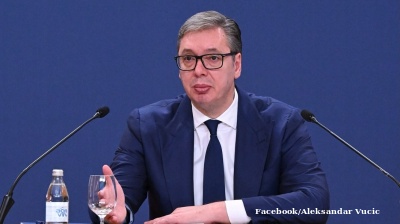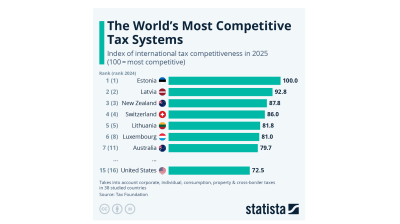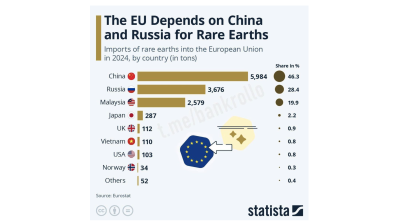In a short piece called Romania: Two 100s and still counting, published by this magazine on February 25, 2019, I highlighted the issue of the foreign debt of the country on its 100th anniversary as a unified and modern state. The first day of the coming winter, December 1, 2024, which nowadays is also Romania’s National Day, will be celebrated as the 106th anniversary. This is the happy part of a tumultuous evolution of which all the Romanians, at home or abroad, will be very proud.
However, during the six years since the article was published, many things have happened, not all of them good. The second hundred in the original article referred to the country foreign debt, which has continued to accumulate at a scary speed. The table below shows a dramatic increase of Romania’s foreign debt since 1980, with reference milestones of the historical events of December 1989 and 2018, up to June 2024.
Romania - Foreign debt evolution, 1980 - June 2024 (billions)
|
Items |
1980 |
1989 |
2010 |
2018 |
June 2024 |
|
Currency |
USD |
EUR |
|||
|
Foreign debt |
10.2 |
-0.8 |
93.63 |
99.8 |
176.9 |
|
International reserves (without gold) |
na |
0 |
32.4 |
33.1 |
64.4 |
Sources: A. Tanase and M. Radoi, Finance and Current Monetary Issues (vol. I and II), 2021-2023 and BNR.
A similar comment was published by bne IntelliNews in September 2018 (A concerning increase of Romania’s foreign debt). I also pointed out the rapid increase of the foreign debt of the country in parallel with domestic debt. The current level of this key macroeconomic indicator, according to the figures published on August 13 this year by the National Bank of Romania (BNR), is alarmingly high compared to previous years. The level of €99.8bn recorded as of end-2018 is already history by now. It should be noted that during this short interval of time (2018-June 2024), there were years in which the foreign debt increased by almost 20%. The peak increases as compared to the previous years were registered in 2020 at 19.6% and in 2023 at 19.2% (see the chart below). There could be a lot of explanations for such cases (the COVID-19 crisis, the war in Ukraine and the millions of refugees flowing in with all the costs involved, inflation, energy prices and many others), but these are obviously risky trends.
To be fair, I anticipated an increase of borrowing from abroad, but there were no clear signals that such a huge increase would follow. Romania continued to borrow during the last six years based on programmes which were not properly designed and not focused in the right way. Despite a good level of international reserves (€63.6bn as of end-July 2024) and good holding of gold reserves (103.6 tonnes or €7.5bn as of end-July at the existing market prices), the country is now paying higher interest rates compared to other countries in the region. One other fundamental issue was that the funds borrowed from abroad were directed to consumption rather than investment. The Romanian mass media, in some cases even specialised financial media, had published articles prepared by representatives of the central bank advising the population to go shopping and “to produce GDP”. It is true that consumption is part of GDP formation, but it was not mentioned that this consumption is mainly based on imported goods (large trade deficits are recorded) which are paid via the increase of the foreign debt, as described above. At the current level, Romanian’s foreign debt surpassed 50% of its GDP. The most damaging aspect is that political actors are not straight when speaking to voters. They have to be honest. The truth should be bluntly told to the population, but most likely this will not happen this year.

Source: Data from the BNR - Interactive data base.
Why is this? 2024 was marked by the local and European parliamentary elections held in June. Elections to chose the new president of the country are approaching, with the first round scheduled for November 24. It is very likely that the second round will be organised on December 8. In parallel, Romanian parliamentary elections will be held on December 1, the very day when the country will celebrate its 106th anniversary. In such a political environment, the truth about the sizeable foreign debt will not emerge. The leaders of key political parties are mainly concerned about how to attract more votes. They are ready to promise higher salaries, higher pensions and many more benefits. There are very populistic measures proposed by the main parties and even so more by the smaller parties, of which some are simply extremist. Such promises are not sustainable as there are no financial sources identified yet to cover the required funds.
Furthermore, in preparation for the incoming presidential elections, the two governing parties — the Social Democrats (PSD) and Liberals (PNL) — started a risky and, in a way, a controversial exercise to correct the old and sometimes unfair methodology of computing pension for millions of Romanians, and to put the pension system on unified and fairer principles. There is no doubt that this was necessary, but the fact that it was implemented just before the presidential elections campaign says a lot.
However, this could backfire. A lot of retired people will still have the same pension after the re-computation process is over. Some 3.8mn pensions will indeed increase according to the new system, but there will be still 559,000 retired people receiving the same modest minimum pension or social subsidy of RON1,281/month (€257/month at the current exchange rate published by the BNR). Some of them need to continue busking to make ends meet.
Busking next to the BNR - author’s collection.

In order to implement such a large scale operation to adjust individual pensions, the pension budget needs to be increased. As compared to, for instance, the amount of RON81.4bn in 2020, the 2024 budget will reach RON136.3bn which is an increase of more than 67%. Next year the required amount to pay the newly re-computed pensions will be even higher, and no sources for the required funds have been identified so far. The so-called “special pensions” will not be abolished despite this being requested by a large majority of the population. The cost of special pensions granted to parliamentarians, magistrates and other categories is estimated at €1bn per year.
The emigration of the young Romanian workforce (some 5mn have left Romania after December 1989, and even more during the last 10 years) dealt a heavy blow to the country’s economic potential. Romania’s population decreased from 23.2mn as of July 1, 1990 to under 19mn residents as of January 1, 2023, according to data published by the National Institute of Statistics (NIS). The emigration was of historical proportions. The aging process of the Romanian population has inevitably speeded up, according to the NIS. This young generation will not contribute anymore to the pension budget, as the practice for many generations and the social contract used to be. The foreign debt will thus increase further.
Despite all of these factors, it should be mentioned that during the transition process, Romania has also had real successes, such as the Nato membership on March 29, 2004 and, a little bit later, European Union (EU) admission with full rights from January 1, 2007. From the national security point of view, these two significant achievements could be considered historical. However, Romania is not yet a full member of the Schengen zone (it was partially admitted only this year). From this point of view, it should be said that the current Romanian authorities did not act in a professional manner and/or in the interest of the population, especially if compared with other Central and Eastern European countries.
Moreover, the deficit of the consolidated state budget already surpassed 4.02% of GDP during the first seven months of 2024, as compared to 2.40% for the same period of 2023. This is much higher than the level negotiated with the EU for this year, mainly due to expansionary expenses and relatively low revenue collection. There is no financial discipline and the country’s financial sector should be put in order. Unfortunately, the budgetary law is disregarded in many cases. All these may prove unsustainable in the short- and medium-term. Without economic growth based on production and services and not on consumption alone (which has been the case so far), Romania will most likely have to continue to borrow both internally and externally, for both the state budget and the pension budget. The current coalition government, the Ministry of Finance and the BNR, which were supposed to control both internal and external deficits, should undertake immediate measures to correct the large macro-economic and social disequilibria.
Any delay will only result in increasing the costs of the required adjustments. The two 100s reached on December 1, 2018 could well be three 100s soon (106 years of existence of the modern state and €200bn as its estimated foreign debt). As the counting is still going on both sides, control over the indebtedness of the country is urgently required. Whether this will happen during 2024, with so many elections still coming, remains to be seen. Most likely, it will not.
Alexandru M. Tanase is a former associate director and senior banker at the European Bank for Reconstruction and Development (EBRD) and former International Monetary Fund (IMF( advisor. The assessments and views expressed based on information as of end-August 2024 are not those of the IMF, EBRD, BNR and/or of any other institution quoted.
Opinion

Western Balkan countries become emerging players in Europe’s defence efforts
The Western Balkans could play an increasingly important role in strengthening Europe’s security architecture, says a new report from the Carnegie Europe think-tank.

COMMENT: Sanctions on Rosneft and Lukoil are symbolic and won’t stop its oil exports
The Trump administration’s sanctions on Russian oil giants Rosneft and Lukoil, announced on October 22, may appear decisive at first glance, but they are not going to make a material difference to Russia’s export of oil, says Sergey Vakulenko.

Armenia’s painful reorientation toward the West
Yerevan’s drive to break free from its dependency on Moscow is generating profound internal political turbulence and exposing it to new external risks, says a report by the Central Asia‑Caucasus Institute & Silk Road Studies Program.

COMMENT: Europe’s “fake it till you make it” war approach cannot hold off Russia’s trillion dollar war machine
In their speeches on the war in Ukraine, European leaders appear like a video clip looped on repeat. Standing before the cameras they declare new packages of support for Kyiv and threaten new measures to pressure Russia as if it was still 2022.



